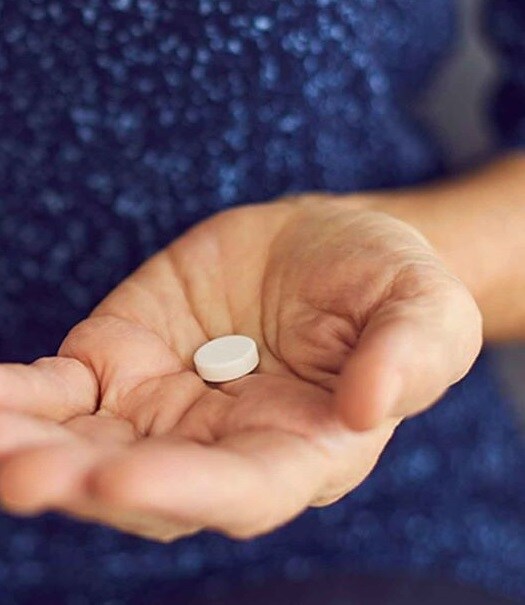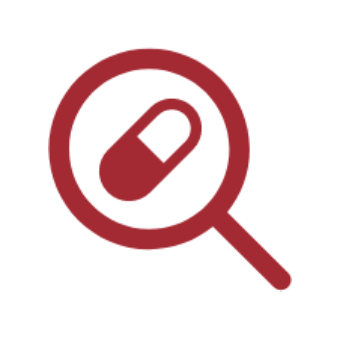Altitude Sickness Prevention Online
Altitude Sickness Prevention Online
Prepare for high-altitude adventures with convenient access to altitude sickness medication, if approved, through Walgreens Virtual Healthcare!

Altitude Sickness Treatment & Prevention
- What is altitude sickness? 1-3
Altitude sickness, also known as acute mountain sickness (AMS) or altitude illness, occurs when your body struggles to adjust to the lower oxygen levels and reduced air pressure found at high altitudes, usually above 8,000 feet (2,400 meters). It is something that often affects climbers, hikers, skiers, and travelers who ascend too fast. The best way to prevent altitude sickness is to ascend gradually, but if you cannot, preventative medication can help your body acclimate.
Altitude sickness is divided into three main syndromes: AMS, high-altitude pulmonary edema (HAPE), and high-altitude cerebral edema (HACE). HAPE and HACE are more serious types of altitude sickness and can lead to fluid build-up in your lungs or swelling in your brain. Both HAPE and HACE are both life-threatening emergencies and require immediate medical help.
Altitude sickness symptoms can differ in intensity and usually appear within 2 to 12 hours after you reach high altitudes. Mild to moderate symptoms often include headaches (which are the most common), nausea, vomiting, dizziness, fatigue, trouble sleeping, shortness of breath when active, and swelling in the hands, feet, or face. These symptoms can feel a lot like a hangover and typically go away within 12 to 48 hours if you refrain from climbing higher or descend to a lower altitude. On the other hand, severe symptoms, which might mean you're developing HAPE or HACE, can include confusion, chest tightness, coughing up blood, pale or bluish skin, and trouble walking or staying awake. How severe the symptoms are can depend on how fast you ascend and how much physical activity you do.
- How can I prevent altitude sickness? 1,3-4
To help prevent altitude sickness, also known as altitude mountain sickness, or AMS, gradual ascent is key.
Stop for a day or two to acclimate for every 2,000 feet (600 meters) you climb above 8,000 feet (2,400 meters). Sleep at a lower altitude when possible. Your respiratory pattern changes during sleep, so the altitude that you sleep at is more important for reducing AMS risk than the maximum altitude reached during the day. A quick trip to high altitudes (above 9,000 feet) within two weeks before your journey may help as well. If AMS does occur, further ascent is not recommended. Descending to lower altitudes can also help relieve AMS symptoms.
If you plan to ascend quickly to a high elevation, your provider may recommend the prescription medication, acetazolamide (Diamox*) to help with acclimatization. When at higher elevations, avoid alcohol for the first 48 hours, keep your caffeine intake consistent to avoid withdrawal headaches, and limit physical activities at first. Drink plenty of fluids, eat high-carb meals, and carry prescription supplemental oxygen if traveling above 9,840 feet (3,000 meters).
Talk with a Walgreens Virtual Healthcare provider about any preventive medications and whether the trip is safe for you if you have anemia, heart or lung conditions. Always be prepared to descend quickly if symptoms develop and learn to recognize early signs of AMS.
- What do altitude sickness medications do? 1,3-5
Acetazolamide, also known as Diamox*, is a prescription medication that can be used to both prevent and treat altitude sickness. It helps your body adjust to higher altitudes faster by increasing the oxygen levels in your body through an increased breathing rate. It works best when taken before reaching the higher altitudes. Acetazolamide can make you urinate more often. Be sure to drink plenty of fluids and avoid alcohol while taking acetazolamide. It is generally tolerated well, but it can cause tingling of the extremities like fingers and toes, and occasionally lips. In cases of severe high-altitude illness, the use of acetazolamide does not replace the need for immediate descent.
- Who should take altitude sickness medications? 1-3,8-9
Altitude sickness, or acute mountain sickness (AMS) is common for travelers going to elevations above 8,000 feet (2,400 meters). Risk increases with rapid ascent, especially when flying directly from low elevations to high-altitude destinations like Breckenridge, Colorado or the Mount Everest region. The best prevention of AMS is gradual ascent, allowing your body time to adjust. However, when gradual ascent isn’t possible, preventative medication like acetazolamide (Diamox*) may be recommended. This is especially true for:
- People with a history of AMS
- Those ascending quickly (e.g., flying to high altitude)
- Travelers going above 9,000 feet (2,750 meters) without acclimatization
- Individuals with previous history of serious altitude complications such as high-altitude cerebral edema (HACE)
Other risk factors for AMS include anemia, respiratory conditions, smoking, alcohol and sedative use. Age, weight, and blood pressure may also play a role.
- What to expect in the virtual visit for altitude sickness medicine?
During your Walgreens Virtual Healthcare Virtual Travel Clinic visit for altitude sickness prevention, you will begin by filling out an online intake that asks you about your health and medication history. You will need to provide details about your upcoming travel – including your departure and return dates, your travel destination, and the activities you plan to engage in during the trip. After that, a nurse practitioner or doctor will reach out to you to start a video call. They will talk about strategies to help prevent altitude sickness, and if necessary, they may prescribe a medication that can be sent to your local Walgreens or pharmacy of your choice.
- How long does it take to get a prescription online?
After you submit a Walgreens Virtual Healthcare online intake form, a provider will review your responses. Typically, you can anticipate a nurse practitioner or doctor reaching out to you via secure chat within 30 minutes, although it might take longer during peak times. Walgreens Virtual Healthcare providers are accessible every day from 7 a.m. to 11 p.m. CST. If a medication is prescribed following your consultation with the provider, the prescription will be sent to your pharmacy on the same day.
- Does insurance cover altitude sickness prescriptions?
Insurance can help cover the costs of various medications, including those for altitude sickness. If you have any questions about your prescription drug coverage, feel free to reach out to your Walgreens pharmacist or your insurance provider. Please note that the cost of medication is not included in your Walgreens Virtual Healthcare visit fee.
Wanting to pay for your medication without insurance? Check out lower prescription prices at Walgreens with our free tool, Walgreens Rx Savings Finder.
Stay on track with Rx alerts & expert care
Frequently Asked Questions
- Where can I get altitude sickness medication?7
A frequently recommended medication for preventing altitude sickness is acetazolamide (Diamox*). This medication requires a prescription, which you can get through a primary care provider, a travel clinic, or through a virtual consultation such as Walgreens Virtual Healthcare, if medically appropriate. In order for acetazolamide to be effective, it is important to start taking acetazolamide prior to your ascent rather than waiting until symptoms appear, so make sure to get the mediation ahead of your trip.
- Do I need a prescription for altitude sickness medication?3
Yes, a prescription is required to get acetazolamide, a medication which helps prevent altitude sickness. A Walgreens Virtual Healthcare provider can help determine if this medicine is right for you and explain how to use it safely.
- Additional Safety Information
Acetazolamide (Diamox*)6-7 – brand discontinued
- Contraindications: hypersensitivity to acetazolamide or any ingredient in the product, situations in which sodium and/or potassium blood serum levels are low (i.e., severe kidney and liver disease or dysfunction, suprarenal gland failure, hyperchloremic acidosis), and cirrhosis.
- Warnings and Precautions: Acetazolamide is a sulfonamide derivative. If you are allergic to sulfonamides (including sulfa antibiotics), cross sensitivity may occur. Severe reactions to sulfonamides have occurred such as anaphylaxis, fever and rash. Discontinue immediately if sensitivity occurs. Caution is advised for patients receiving co-administration of high-dose aspirin and acetazolamide. In patients with pulmonary obstruction or emphysema, acetazolamide use may lead to acidosis. Acetazolamide treatment can lead to electrolyte imbalances, including hyponatremia (low sodium levels) and hypokalemia (low potassium levels), as well as metabolic acidosis. Therefore, it is advisable to periodically monitor serum electrolytes during and after taking acetazolamide. Special caution should be exercised in patients with conditions that are linked to, or increase the risk of, electrolyte and acid/base imbalances, such as those with impaired renal function (including elderly patients), individuals with diabetes mellitus, and patients experiencing impaired alveolar ventilation. Blood glucose levels may fluctuate.
If you are pregnant or plan to become pregnant or are nursing, speak with your provider to discuss the risks of acetazolamide use as it should be used in pregnancy and nursing only if the potential benefit justifies the potential risk to the fetus or child. - Side Effects: Some common side effects include paresthesias, particularly a "tingling" feeling in the extremities, hearing dysfunction or ringing in the ears, loss of appetite, taste alteration, gastrointestinal disturbances such as nausea, vomiting and diarrhea, polyuria, and occasional instances of drowsiness and confusion. Metabolic acidosis and electrolyte imbalance may occur. Transient nearsightedness has been reported and usually resolves when medication is reduced or discontinued. Other occasional adverse reactions include hives, black stool, blood or glucose in urine, hepatic insufficiency, flaccid paralysis, photosensitivity and convulsions.
*Diamox brand has been discontinued.
References
- Acute mountain sickness. MedlinePlus Medical Encyclopedia. Accessed September 19, 2025. https://medlineplus.gov/ency/article/000133.htm
- How altitude sickness affects your lungs. American Lung Association. Accessed September 19, 2025. https://www.lung.org/blog/altitude-sickness-respiratory-problems
- Centers for Disease Control and Prevention. High-Altitude Travel and Altitude Illness. In: CDC Yellow Book: Health Information for International Travel 2024. Updated April 23, 2025. Accessed September 19, 2025. https://www.cdc.gov/yellow-book/hcp/environmental-hazards-risks/high-altitude-travel-and-altitude-illness.html
- McGowan J, Thurman J, Huecker MR. Acute Mountain Sickness. StatPearls [Internet]. Updated September 15, 2025. Accessed September 19, 2025. https://www.ncbi.nlm.nih.gov/books/NBK430716/
- Acetazolamide (Diamox): Uses & Side Effects. Cleveland Clinic. Accessed September 22, 2025. https://my.clevelandclinic.org/health/drugs/18976-acetazolamide-oral-tablets
- Diamox. Package insert. Teva Pharmaceuticals. 2025. https://www.accessdata.fda.gov/drugsatfda_docs/label/2025/008943s054lbl.pdf
- Acetazolamide. Package insert. Sun Pharmaceutical Industries, Inc. 2015. https://dailymed.nlm.nih.gov/dailymed/lookup.cfm?setid=abeb13eb-66a5-4030-9bc2-5981acd196b9
- Altitude illness: risk factors, prevention, presentation, and treatment. Am Fam Physician. 2010;82(9):1103-1110. https://www.aafp.org/pubs/afp/issues/2010/1101/p1103.html
- Acute altitude illness: updated prevention and treatment guidelines from the Wilderness Medical Society. Am Fam Physician. 2020;101(8):505-507. https://www.aafp.org/pubs/afp/issues/2020/0415/p505.html
Disclaimers
*Currently available in the following states: AL, AZ, CA, CO, CT, FL, GA, IL, IN, KS, KY, LA, MA, MD, MI, MN, MO, NC, NJ, NV, NY, OH, OK, PA, SC, TN, TX, VA, WA, WI
Based on national averages. Actual times may vary.
Labcorp and Quest staff are not associates, employees and/or agents of Walgreen Co. or any Walgreens subsidiary or affiliated company. Lab service will be a separate fee, price may vary.
Prescription based on medical evaluation and not guaranteed.
Walgreens-affiliated medical practices are independently owned and operated by licensed physicians who provide services using the Walgreens virtual care program telehealth platform. For more information about the relationship between Walgreens and the medical practices click here.
Walgreens Health Medical Group California P.C. is a California professional medical corporation utilizing the fictitious name "Walgreens Health Medical Group California P.C." pursuant to Cal. Bus. & Prof. Code § 2415. To view the Fictitious Name Permit click here.




